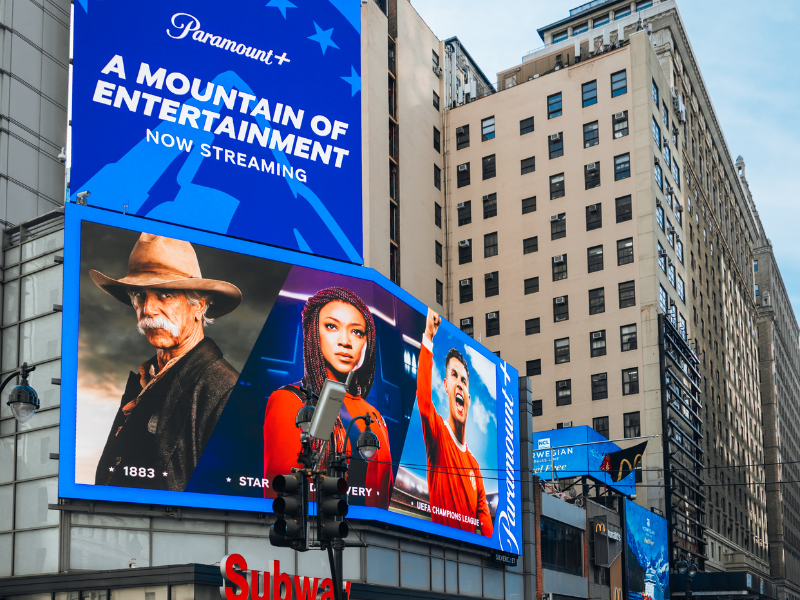FORBES Feature: The Importance Of Integrating Digital And Traditional Marketing
- Denis Sinelnikov

- Oct 17, 2023
- 4 min read


It's the digital age. Between work, shopping and entertainment, we're online several times a day (and an increasing number of us are online "almost constantly," according to Pew Research). So why am I, a digital marketer, talking about traditional marketing? Because we still operate in the physical world. While online consumes much of our daily life, it's not everything—not yet.
So, let's look at why it's important to integrate digital and traditional marketing.
Why Traditional Marketing Still Matters
Before we can look at integrating digital marketing and traditional marketing, we need to understand why the latter is still important. Traditional marketing can help brands:
Build trust with local consumers.
Breakthrough online clutter (without looking, name the first two ads you saw on this page).
Expand their reach.
Increase the effectiveness of their digital marketing efforts.
This last point is, to me, the most crucial in illustrating why you should integrate your digital and traditional marketing. Local SEO is important for businesses that need to market in their geographic region. However, if you're searching Google for a local plumber and you see two companies come up—one that you've seen advertised on Home Depot's website and one whose jingle you just heard on the radio—which are you going to choose?
While you might click the link for the company that advertises on the Home Depot site, most people will click on the company they saw around town. The reason comes down to trust.

In marketing for one of our clients, AAA Distributor—a local kitchen, bath and flooring store in Philadelphia—our goal was to get people in the door at their showroom. Our digital marketing was important, but it was only one part of our strategy. On the digital side, we focused on building strong SEO with content and keyword management, as well as PPC ad placement and social media. Meanwhile, we took to the streets and the radio waves, placing billboards and airing ads on local radio stations. The result: increased traffic into their showroom (and their website) and increased sales.
I like to think of it this way: traditional builds trust, and digital remarketing strengthens that.
How Traditional Marketing Builds Trust
Communication theorist Marshall McLuhan coined the phrase, "The medium is the message." That phrase is vital to marketing. The medium you present your message on will influence how people perceive it. While we all rely on the internet, it's not what we consider "local." We use it to communicate with people all over the world.
On the other hand, television, billboards, mail flyers and radio are all local mediums. They are where we live, work and entertain ourselves offline. These mediums are familiar because they're around us. As a result, we're likely to trust them as sources of information.
For example, Google can show you gas stations and fast-food restaurants on your map while you're traveling. But do you use that feature, or do you look for the billboard and road signs advertising a gas station or restaurant? While digital tools and digital marketing continue to grow in importance, the value of ad placement where a person physically is can never be replaced.
Integrating Your Digital and Traditional Marketing Efforts
Now that we've looked at why integrating traditional and digital marketing is important, let's look at how to do that integration right. Just as you should never run your social media and PPC marketing completely independently of each other, your digital and traditional marketing need to work together and complement each other. Here, we're not going to look at the individual avenues for your digital and traditional marketing. Instead, I want to talk about where they cross over.
• Match your messaging between mediums. Your digital marketing should have a throughline (such as a company's motto or tag line) that carries through from one digital medium to another. Bring that over into your traditional marketing mediums as well (this may mean reworking it to something that works in audio format as well as written).
• Let your traditional and digital marketing support each other. Include QR codes in print advertising, television ads, and on street-level marketing to encourage people to visit a website or learn more about a service. Meanwhile, you can capture lead information by offering to mail print brochures and branded samples using sign-up forms on your website or from social media.
• Participate in local events and promote them online. Sponsor a local event, take part in a trade show or set up a table at a local convention. Meanwhile, advertise these events and opportunities on your social media, website and other digital marketing channels. This will build your brand locally and boost your local SEO rankings.
• Let your advertising content crossover mediums. Your television ads don't just have to run on television. Nor do your radio ads only have to be on the radio. Use your television ads on YouTube and get your radio ads into podcast spots. By sharing your message across both traditional and digital mediums, you can increase your reach and build brand recognition.
The marketing world continues to change and evolve. In my experience, digital marketing has better tracking KPI mechanisms and, therefore, can be more valuable. However, traditional is great for multi-layering your marketing plan to get prospects from all sides. If you learn now how to integrate your digital and traditional marketing strategies, you'll be ready for the next change that comes.



Comments